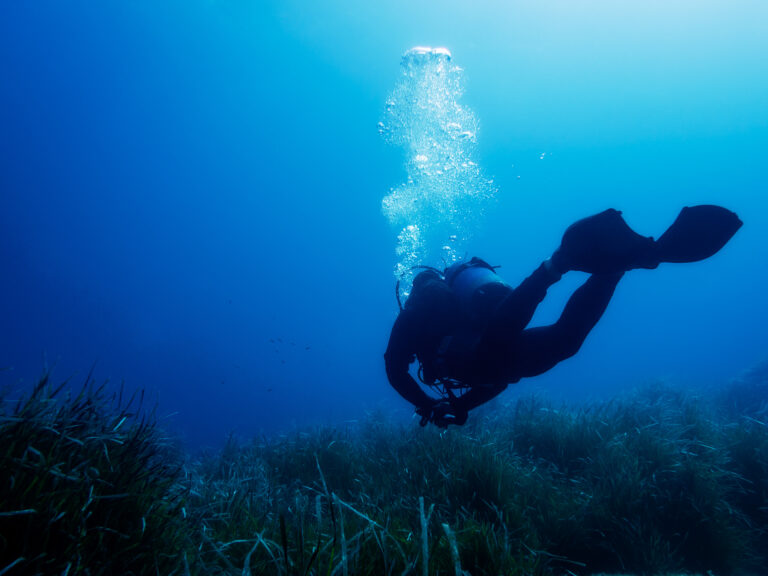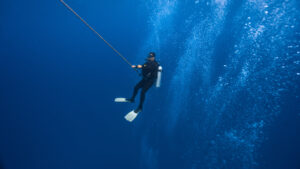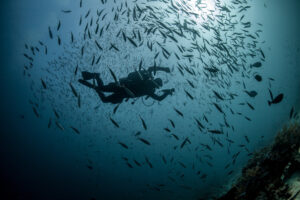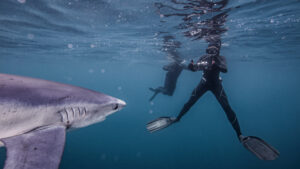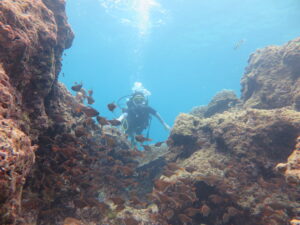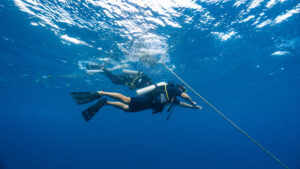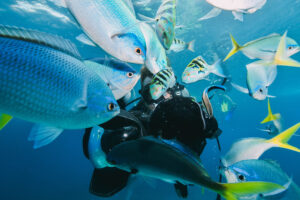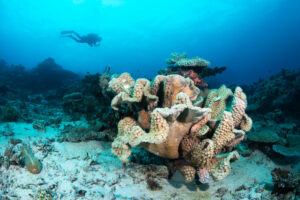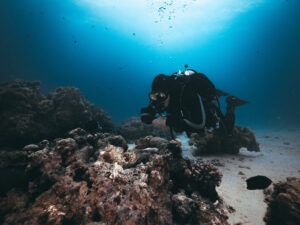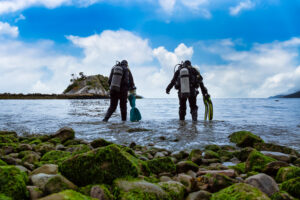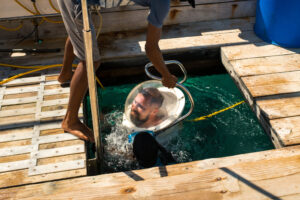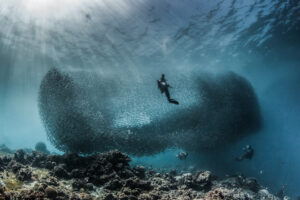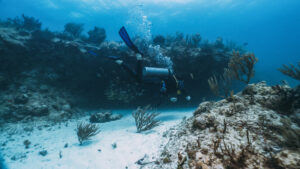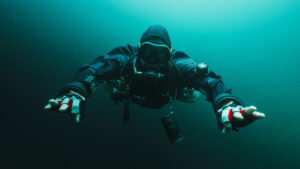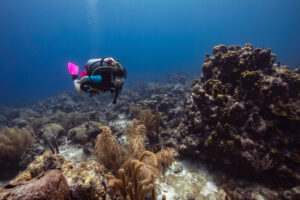What Are Gaseous Impurities?
In the world of scuba diving, ensuring the purity of breathing gas is paramount. Gaseous impurities refer to any unwanted substances present in the air or gas mixtures used by divers. These impurities can include various gases that, if inhaled in significant quantities, pose serious health risks. Maintaining the highest standard of gas purity is crucial for diver safety, as contaminated breathing air can lead to severe health issues and compromise the safety of underwater activities.
Understanding Gaseous Impurities
Gaseous impurities in scuba diving encompass several types of contaminants that can enter the breathing gas supply. Common impurities include carbon monoxide (CO), carbon dioxide (CO2), hydrocarbons, and water vapor. Carbon monoxide is particularly dangerous due to its ability to bind with hemoglobin in the blood, reducing the oxygen-carrying capacity and leading to potentially fatal consequences. Carbon dioxide, while naturally present in exhaled air, can accumulate in closed environments, causing headaches, dizziness, and impaired judgment.
Hydrocarbons, originating from oil and fuel residues, can contaminate breathing gas through poor maintenance of compressors or the use of oil-lubricated equipment. Water vapor, although less immediately hazardous, can promote corrosion inside diving cylinders and equipment, leading to mechanical failures and compromising the integrity of the breathing gas supply. Understanding the sources and types of these impurities is the first step in mitigating their risks.
Impurities can enter the gas supply through various means, such as contaminated air intake during the gas compression process, inadequate filtration systems, or improper storage of diving cylinders. Poorly maintained compressors and oil-lubricated equipment can introduce hydrocarbons, while high humidity conditions can result in elevated water vapor levels. Awareness of these potential contamination sources is essential for preventing impurities from compromising the safety of divers.
Effects of Gaseous Impurities on Divers
The presence of gaseous impurities in breathing gas can have severe health implications for divers. Carbon monoxide, even in small concentrations, can cause symptoms such as headaches, dizziness, nausea, and confusion. At higher levels, it can lead to unconsciousness, permanent brain damage, or death. Divers are particularly vulnerable to carbon monoxide poisoning due to the increased pressure underwater, which enhances the gas’s binding to hemoglobin.
Carbon dioxide buildup, commonly known as hypercapnia, can occur when exhaled CO2 is not adequately expelled from the breathing apparatus or if the diver’s breathing rate increases significantly. Symptoms of hypercapnia include shortness of breath, confusion, and loss of consciousness. In extreme cases, it can result in respiratory failure. Divers must be vigilant about their breathing patterns and ensure their equipment is functioning correctly to prevent CO2 buildup.
Hydrocarbons present another risk, as they can cause lung irritation and damage when inhaled. The presence of oil or fuel residues in the breathing gas can lead to long-term respiratory issues, increasing the diver’s susceptibility to infections and chronic lung conditions. Water vapor, while not directly harmful to the diver, can facilitate the growth of bacteria and fungi inside the diving equipment, posing additional health risks.
Safety thresholds for impurities in breathing gases are established to minimize these risks. For instance, international standards like EN12021 specify maximum allowable concentrations of impurities in compressed breathing air. These standards help ensure that divers breathe air that meets stringent purity criteria, safeguarding their health and well-being.
Detection and Measurement of Impurities
Detecting and measuring gaseous impurities in diving gases is a critical aspect of ensuring diver safety. Various technologies are employed to monitor the quality of breathing air. Electronic sensors, such as those used in gas analyzers, can detect the presence of carbon monoxide, carbon dioxide, and other contaminants with high precision. These devices provide real-time data, allowing dive operators to take immediate action if impurity levels exceed safe limits.
Chemical sensors, often used in portable gas detectors, offer another method for impurity detection. These sensors typically involve a chemical reaction that changes color in the presence of specific gases, providing a visual indication of contamination. While not as precise as electronic sensors, chemical sensors are valuable for on-the-spot assessments of air quality, especially in remote diving locations.
Standards for air quality in scuba diving are set by organizations such as the Compressed Gas Association (CGA) and international bodies like the International Organization for Standardization (ISO). These standards outline acceptable limits for various impurities, ensuring that the air supplied to divers is safe for breathing. Adherence to these standards is mandatory for reputable dive operators and air suppliers, who regularly test their equipment and gas supplies to comply with these regulations.
Regular monitoring and maintenance of diving equipment are essential for preventing impurities. Compressors must be fitted with high-quality filters that are regularly replaced to remove contaminants from the air. Additionally, divers should be trained to recognize the signs of contaminated air and understand how to use gas detection equipment effectively. By implementing robust detection and measurement protocols, the risks associated with gaseous impurities can be significantly reduced.
Prevention and Management of Impurities
Preventing gaseous impurities from entering the breathing gas supply requires a multifaceted approach, involving proper equipment maintenance, rigorous filtration, and adherence to best practices. Filtration systems play a crucial role in ensuring air quality. High-efficiency particulate air (HEPA) filters and activated carbon filters are commonly used to remove particulate matter and hydrocarbons from the compressed air. Regular replacement and maintenance of these filters are vital to their effectiveness.
Proper handling and storage of scuba tanks are also essential in preventing contamination. Tanks should be filled in controlled environments using certified clean air sources. Dive operators must ensure that compressors are well-maintained and located away from potential sources of contamination, such as vehicle exhausts or industrial emissions. Tanks should be inspected regularly for signs of corrosion or damage that could compromise the integrity of the stored air.
Individual divers can also contribute to maintaining gas quality by following recommended practices. This includes regularly inspecting and servicing their personal diving equipment, ensuring that o-rings and seals are intact, and avoiding the use of oil-lubricated equipment. Divers should also be cautious about the air they breathe during tank fills, opting for reputable dive centers that adhere to air quality standards.
Dive operators have a responsibility to educate divers about the importance of air quality and the potential risks associated with gaseous impurities. This can be achieved through training programs that emphasize the recognition of symptoms of contamination, the proper use of detection equipment, and the importance of reporting any concerns about air quality. By fostering a culture of safety and awareness, the diving community can collectively reduce the risks posed by gaseous impurities.
Regulations and Standards
Regulations and standards governing the quality of breathing gases in scuba diving are established by various international and regional organizations. These standards are designed to ensure that the air divers breathe meets stringent purity criteria, thereby protecting their health and safety. One of the most widely recognized standards is EN12021, which specifies the allowable limits for impurities in compressed air for breathing.
The Compressed Gas Association (CGA) also provides guidelines and standards for the production and maintenance of compressed gases, including those used in scuba diving. These standards cover a range of aspects, from the quality of the raw materials used in gas production to the specifications for filtration and detection equipment. Compliance with these standards is essential for dive operators and air suppliers to maintain the safety and reliability of their services.
Regional regulations may also apply, depending on the location of the diving activities. In the United States, for example, the Occupational Safety and Health Administration (OSHA) sets regulations for the quality of breathing air used in commercial diving operations. These regulations require regular testing and certification of air quality to ensure compliance with safety standards.
Certifying bodies such as PADI (Professional Association of Diving Instructors) and NAUI (National Association of Underwater Instructors) play a crucial role in enforcing these standards. These organizations provide training and certification programs that emphasize the importance of air quality and educate divers and dive operators about the necessary precautions to prevent contamination. By adhering to these regulations and standards, the diving community can ensure that the air supply remains safe and reliable.
Key Takeaways
The presence of gaseous impurities in scuba diving air supplies poses significant health risks to divers. Understanding the types, sources, and effects of these impurities is essential for maintaining safety. Implementing robust detection and prevention measures, adhering to established regulations and standards, and fostering a culture of awareness and education are crucial steps in mitigating these risks. By prioritizing the purity of breathing gases, the diving community can ensure safer and more enjoyable underwater experiences.

